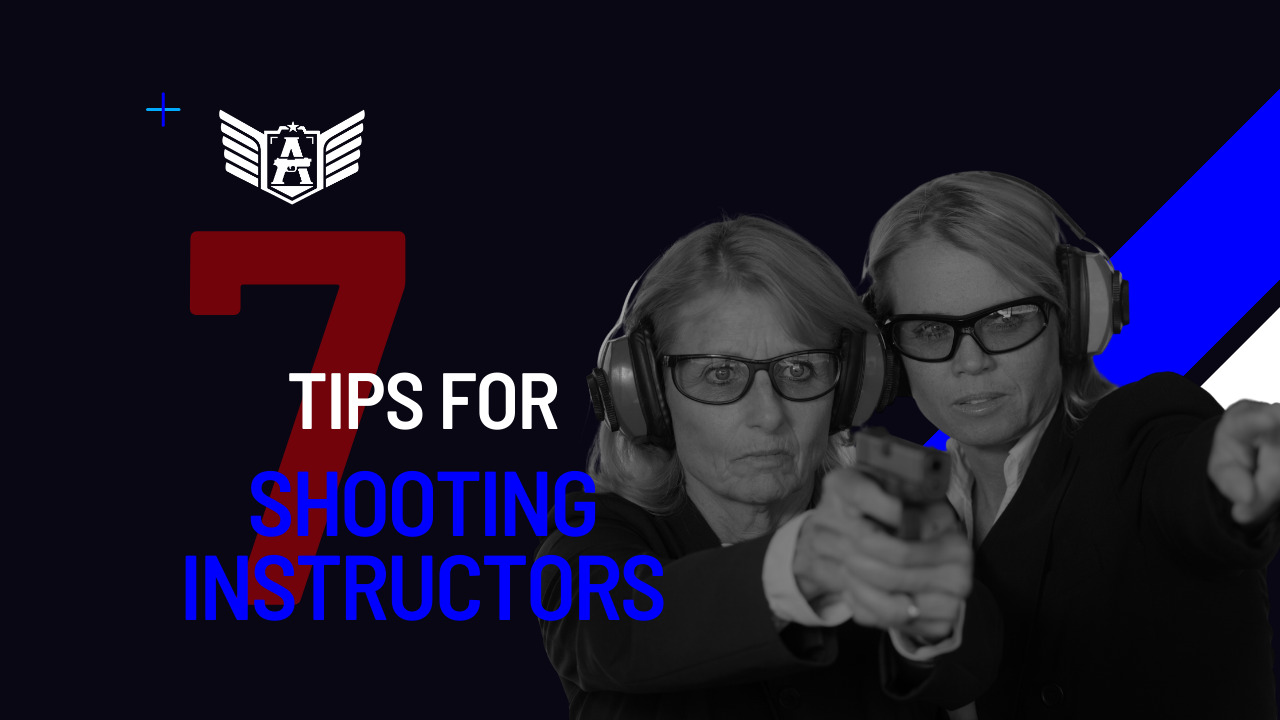
Teaching someone to shoot or to defend himself is a life-changing experience. The bond that forms between an instructor and his student, when a genuine commitment to the subject exists, is absolutely incredible. However, teaching is a profession that demands expertise, continuous learning, and certain skills that not everyone possesses. For those who decide to embark on this journey, I’ve compiled these 7 tips for shooting instructors that might help you view your profession in a more favorable light.
(1) Wholeheartedly commit to your students.

It’s easy for any professional to become complacent. I always remind my students, especially those who later become instructors, about the reasons we do what we do. We are preparing individuals for the worst days of their lives, training them to stand strong when the world seems to crumble around them. We consider it a vital commitment.
The lives of the instructor and the students become forever intertwined, and the instructor bears an eternal responsibility for how their students respond to adversity.
(2) Prepare each class as if it’s the best.

Given the profound bond we’ve mentioned, it’s the instructor’s duty to meticulously prepare every aspect of the teaching and learning process.
A shooting class should be an unforgettable experience for the student, one that leaves them eager to delve deeper, learn more, and train rigorously. As an instructor, it’s your responsibility to ensure this sense of enchantment takes root, and it all hinges on the preparation of your class.
(3) Don’t let your ego overshadow your students.

Instructors can sometimes make the amusing mistake of trying to appear cooler, sexier, or more tactical, decked out in camo, while their students seem to fade into the background.
Instructors are meant to guide, not flaunt their prowess. Selflessness is the key to success as an instructor. Your students’ growth and well-being should always outweigh any personal ego.
(4) Learn something new every day.

You can’t effectively teach if you stop learning. Consider how many individuals worldwide are dedicated to combat, marksmanship, or subjects related to these fields. Each day yields new information that can transform your understanding, your teaching approach, your actions, and your worldview.
Failure to stay updated and learn continuously is a betrayal of the commitment you have to your students’ lives. I encourage you to strive for daily learning.
(5) Study the learning process.

To excel in instruction, you must understand the mechanics of the learning process. Many common practices on shooting ranges are far from being state-of-the-art.
(6) Don’t be a mere repeater; grasp what you’re teaching.

Ever heard the story of my grandma’s fish? Allow me to share it:
Some time ago, I was all set to roast a fish when my mother intervened. She said, ‘Lucas, you can’t just put this fish in the oven like that. You need to cut off its tail.’
Curious, I asked, ‘Why?’
Her response was, ‘This is the right way to do it. I learned it from my mom.’
Intrigued by the reason behind it, I called my grandma and asked, ‘Hello, Grandma! How are you? I was preparing a fish for dinner, and when I was about to place it in the oven, my mom insisted I should cut off the tail. Is she correct?’
My grandma’s reply was, ‘Yes, Lucas! Cut it off.’
I agreed, ‘Alright, Grandma, I will. But could you please explain to me why I should do this?’
She answered, ‘I’ve been doing it this way my whole life. I learned it from my mom.’
Still curious, I called my great-grandmother, who was in the hospital at the time.
I asked, ‘Hello, Grandma! I’m trying to bake a fish today, but neither my mom nor my grandma will allow me to put it in the oven with its tail on. They said you taught them to cut it off. Is that true?’
My great-grandmother confirmed, ‘Yes, Lucas, that’s true. But you don’t need to do that. Your oven is bigger than mine.’
In the world of shooting, similar things happen to what happened with my mother’s fish. People continue to train in a certain way, but they often forget to ask why
(7) Don’t compromise your principles for profit.

As soon as people attempt to turn “shooting instruction” into their profession, they quickly realize that generating sufficient income at the shooting ranges is no easy task.
Coupled with a lack of expertise in business administration and finance, many instructors make the regrettable choice of compromising the quality of their instruction while attempting to lower prices.
This leads to students who aren’t actually learning (though they often leave with a certificate, a T-shirt, and a velcro patch), and instructors who struggle to provide for their families.
Final Statement

I have a dream. I aspire to witness shooting instruction reaching its highest level. I firmly believe that in a courageous and well-trained society, evil cannot prosper. I acknowledge that achieving this goal requires more than just this text, but I hope it serves as a step toward enhancing the quality of instruction.
If you share this dream with me, I kindly invite you to leave your comments and share this post with fellow instructors.
If there’s any way I can assist you, please don’t hesitate to reach out; you can count on my support.





